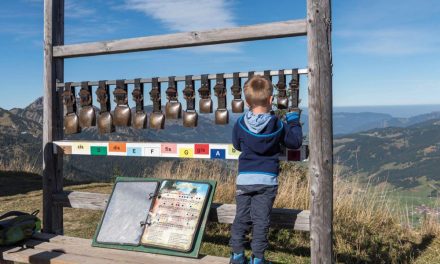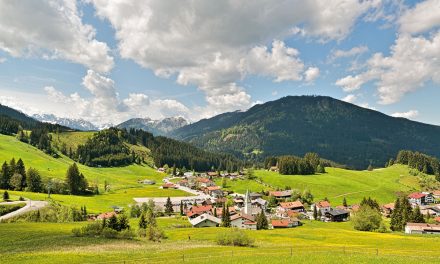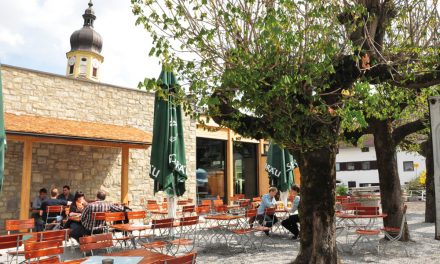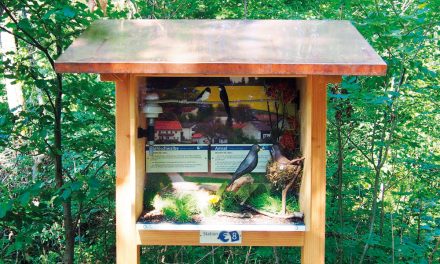The Alpine Rose Trail Magnificent views of the landscape
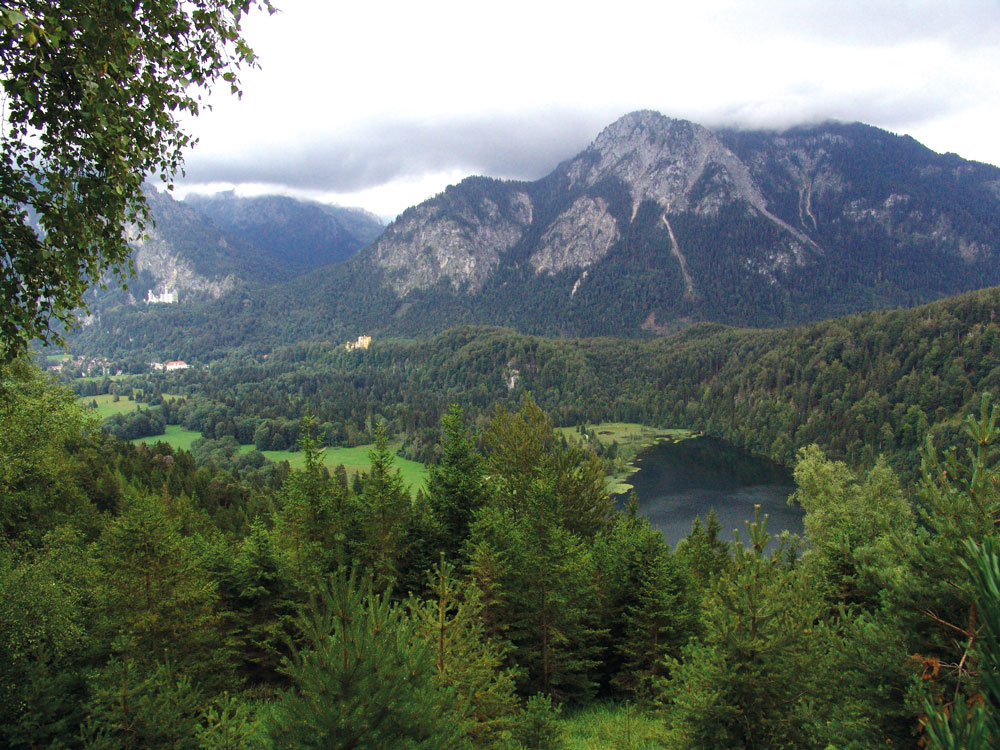
The Alpine Rose Trail is one of the most beautiful hiking trails in Füssen. King Max had the road laid out for his wife Marie in 1850. Around this path countless alpine roses have been planted to explain its name. Today there is hardly anything left to see of the Alpine Roses, but a hike along the Alpine Roses Trail offers magnificent views of the landscape and sights of the area. The Alpenrosenweg is a section of the Ostallgäuer Höhenweg.
The Alpenrosenweg can be reached by walking through the old town to the Lechfall. Here, where thunderous masses of water plunge down to 12 metres, an impressive natural spectacle awaits you. The King Max Steg, which leads directly over the Lechfall, offers a perfect view of the impressive Lech Gorge. With this footbridge and a bust embedded in the rock wall, Maximilian II. was set a monument, which also underlines the dedication “the grateful city of Füssen”. It refers to the economic upturn that began in the region with the construction of Hohenschwangau Castle by Maximilian in 1833.
The most beautiful views, which await you on the Alpenrosenweg, go down to the Schwansee and its adjacent park. It is an unparalleled garden architectural gem, the royal castle park of Hohenschwangau. The park should reflect nature as a landscape as created by God. The Schwansee Park, for example, has two viewing axes that open up the grounds in four directions, so the paths lead from one landscape to the next. The landscape around Lake Schwansee is characterised by wet meadows and bogs. Crown Prince Maximlian acquired the land for his castle park and initially commissioned landscape architect Carl August Sckell with the planning. After all, his uncle had also planned the English Garden in Munich. After Sckell’s death, the order was passed on to Peter Joseph Lenné, who finally built a park based on the English model.
He had hiking trails laid out, which have a total length of about 60 kilometres. In addition, a racecourse below the castle, a jumping area and even a tea terrace above the Swan Lake were built for Queen Marie and her entourage. By the skilful arrangement of groups of trees and individual trees the impression of size and width was achieved. To plant the individual trees or groups of trees, small mounds of earth were piled up on the peaty subsoil all over the area. This was the only way for the planted trees to settle.
Many of the trees in the park are completely untypical of the area, such as the North American thujen or the chestnut trees at the riding track. The Swan Lake Park is not only a nature and bird sanctuary, it is a garden monument that provides an enormous variety of different habitats for animals and plants with its rare pipe grass meadows, moor areas and the Swan Lake. For example, the park is home to numerous orchid species such as the Lady’s Slipper and six different gentian species. The highlight of the hike along the Alpenrosenweg is the saffron-yellow Hohenschwangau Castle and the lime-white Neuschwanstein Castle near the Alpsee. The few steep sections on the Alpenrosenweg are secured with wooden railings and footbridges, so that young and old can walk on it without any problems.
Info:
If you would like to combine the hike with a visit to Hohenschwangau Castle and/or Neuschwanstein, you should buy the tickets in the Ticketcenter, Alpseestraße 12, phone 08362 930830 in Hohenschwangau before the hike! Tickets for Schloss Neuschwanstein and Schloss Hohenschwangau can only be purchased at the Ticket Center and only on the day of your visit.
Tickets for the Museum of the Bavarian Kings can be purchased directly from the Ticket Center or the Museum.







